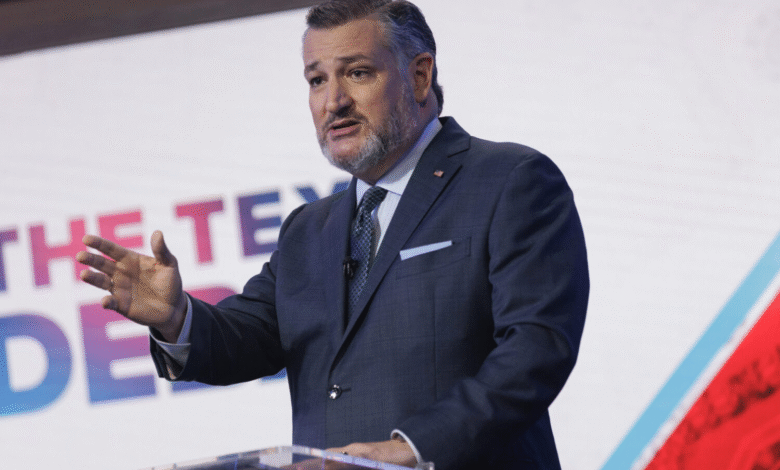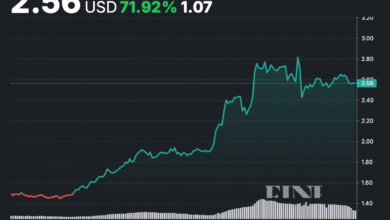$1000 Investment Account at Birth: A New Opportunity for Kids

Imagine a world where every child starts life with a financial head start, thanks to a $1000 investment account at birth. This landmark initiative is a key feature of the recently passed Invest America Act, introduced by Senator Ted Cruz, which aims to empower future generations. By establishing a federal child investment program, the act ensures that every newborn receives this initial financial boost, setting the stage for a brighter economic future. Families and friends will also have the opportunity to contribute up to $5,000 to each child’s account, enabling them to grow their investments significantly. With the funds being invested in low-cost S&P 500 index funds, these accounts will allow for tax-deferred growth until the individual turns eighteen, after which distributions will be subject to capital gains tax.
The concept of a foundational investment account for newborns is gaining traction as a means to promote economic resilience among future generations. This innovative strategy seeks to provide every child with an initial financial asset, equipping them with resources as they transition into adulthood. Recognized under the umbrella of child investment initiatives, these federally funded accounts present an encouraging opportunity for families to invest in their young ones’ futures. By enabling contributions from loved ones, the program fosters a culture of investment and financial literacy, while focusing on low-cost index fund options for sustainable growth. As this initiative unfolds, it highlights a transformative approach to wealth accumulation and social mobility.
The Invest America Act: A New Era for Child Investment
The Invest America Act marks a significant milestone in how we approach the financial future of our children in the United States. Introduced by Senator Ted Cruz, this legislation ensures that every American child receives a foundational investment account at birth, setting the stage for a more financially secure future. This initiative is not just about providing a $1,000 investment account; it’s about instilling the value of savings and investment from an early age. Children can begin their financial journeys with a solid starting point, fostering a culture of financial literacy and responsibility in the next generation.
Furthermore, the provisions within the Invest America Act allow for additional contributions from family, friends, and even businesses, amplifying the growth potential of these accounts. With the cap set at $5,000 in contributions, these accounts can grow substantially over time, especially with the ability to invest in low-cost funds that track the S&P 500. This strategic investment choice leverages the historical performance of the market, providing children with an opportunity to see their funds grow tax-deferred until they reach adulthood.
Understanding the $1,000 Investment Account at Birth
At the heart of the Invest America Act is the concept of a $1,000 investment account established at birth for every American child. This initiative represents a proactive approach by the federal government to empower families to build financial security from the very beginning of a child’s life. By assigning these funds to a low-cost investment fund, the program emphasizes growth and sustainability, which can help alleviate financial burdens as children transition into adulthood.
Moreover, the benefits extend beyond mere financial support. Families are encouraged to add funds, enhancing the account’s value and instilling habits of saving and investing in children from a young age. By making these contributions and witnessing their investment grow over time, children learn valuable lessons in finance, such as the impact of compound interest and the importance of starting early when utilizing investment strategies.
The Role of Federal Child Investment in Wealth Building
Federal child investment initiatives, like the $1,000 investment account at birth, play a pivotal role in transforming the wealth landscape across the nation. Wealth disparity is often perpetuated by a lack of investment in future generations. By providing children with a financial head start, the Invest America Act aims to level the playing field, ensuring that all children have the opportunity to accumulate wealth and pursue their dreams, without being hindered by economic constraints.
Additionally, this strategy reflects a paradigm shift in policy, recognizing that early investments in child development and financial literacy can produce long-term economic benefits. By equipping children with an investment account, the federal government is not only investing in individuals but also in the future economy, promoting a more equitable society where wealth can be cultivated from a young age.
Senator Ted Cruz’s Vision for Future Generations
Senator Ted Cruz’s proposal encapsulates a visionary approach to financial education and empowerment for American children. The Invest America Act reflects his commitment to fostering an environment where every child has the opportunity to thrive financially. By introducing legislation that allocates a $1,000 investment account at birth, Cruz is addressing the critical need for early financial education and support, which was previously overlooked.
Cruz’s vision extends beyond mere financial aid; it embodies a comprehensive framework aimed at cultivating a culture of investment and savings among young Americans. This initiative encourages parental involvement, as families can supplement these accounts further, creating an investment ecosystem that not only benefits individuals but strengthens communities as well.
The Long-Term Benefits of Investing Early
Investing early in life, particularly through programs like the $1,000 investment account at birth, can lead to significant long-term financial security. The earlier investment in an individual’s future opens the door to not only wealth accumulation but also greater financial independence. By allowing funds to grow in a tax-deferred environment, especially when investing in equity markets like the S&P 500, children can experience the power of compounding interest, leading to massive growth by the time they reach adulthood.
Moreover, the structure of the accounts supports better financial practices among young adults. Understanding how to manage investments and navigate capital gains tax on distributions equips them with vital skills to manage their finances effectively. These accounts encourage them to become adept investors, paving the way for informed financial decisions and stability throughout their lives.
Navigating Capital Gains Tax on Distributions
One important aspect of the $1,000 investment account initiative is its tax implications, particularly the capital gains tax on distributions once the child turns 18. With the ability to invest in low-cost funds tracking the S&P 500, the potential for growth is substantial. However, understanding that distributions will be subject to capital gains taxation is essential for future beneficiaries. This aspect underlines the importance of planning and strategizing investment withdrawals wisely to mitigate tax liabilities.
Educating young adults about capital gains tax ensures that they are better prepared for making informed decisions regarding their investments. As they learn how to navigate the financial landscape and assess the impacts of taxation on their wealth, they’ll develop a deeper understanding of personal finance, which will serve them well throughout their adult lives. Knowing how to manage taxes effectively can significantly impact their overall accumulation of wealth.
Creating a Supportive Community Around Child Investment
The Invest America Act not only aims to empower individual families but also encourages the creation of a supportive community around child investment. Friends, relatives, and even local businesses can contribute to a child’s investment account, creating a communal effort in ensuring financial security for the next generation. This community aspect promotes a culture where the importance of saving and investing is recognized and celebrated.
Furthermore, as individuals contribute to these accounts, it fosters conversations about financial literacy and education. Shared knowledge within communities can lead to increased awareness about investing, saving strategies, and responsible financial management. Such communal engagement is essential in driving the success of the initiative and instilling a sense of shared responsibility in cultivating future economic leaders.
The Future of Investment Account Policies
The introduction of the $1,000 investment account at birth reflects a significant shift in how investment policy is formulated in the United States. As more parents recognize the importance of early financial education, similar policies may emerge across different states and nationally, paving the way for a holistic enhancement of wealth management for the young. By embracing such innovative policies, we can expect a future where investment opportunities are expanded, especially for those from economically disadvantaged backgrounds.
The Invest America Act may also inspire discussions surrounding other strategies for economic equity. By examining the benefits of federal child investment initiatives, lawmakers will likely explore additional ways to support families and create sustainable wealth solutions. The combined efforts of government, private sectors, and communities can result in transformative changes that benefit not only current generations but also generations to come.
Conclusion: Investing in Our Children’s Futures
In conclusion, the $1,000 investment account at birth represents a foundational shift towards a brighter financial future for American children. Through the Invest America Act, Senator Ted Cruz has positioned this initiative as a crucial step in fostering financial education and accessibility. By empowering families to invest early, there is immense potential for positive outcomes in wealth accumulation and financial literacy.
As we move forward, it is essential to continue supporting such initiatives and advocating for policies that enhance the financial security of our young citizens. Investing in our children is not merely a transaction; it’s a commitment to a prosperous future. By embracing the principles of investing, saving, and financial responsibility, we can lay the groundwork for a more secure and equitable economic landscape.
Frequently Asked Questions
What is the $1000 investment account at birth introduced by the Invest America Act?
The $1000 investment account at birth is a federal program established by the Invest America Act, which provides every American child with an initial investment funded by the government. This account is designed to help families invest in their children’s future, allowing for contributions by family, friends, and businesses.
How does the $1000 investment account at birth work under the Invest America Act?
Under the Invest America Act, each American child will receive a $1000 investment account at birth, which can be funded by both the federal government and additional contributions from friends and family, up to $5000. The funds can be invested in a low-cost fund tracking the S&P 500, growing tax-deferred until the child reaches age eighteen.
Who proposed the federal child investment account with the $1000 investment at birth?
The $1000 investment account at birth was proposed by Texas Republican Senator Ted Cruz as part of the Invest America Act. This initiative aims to provide financial support and investment opportunities for young Americans from the moment they are born.
How will the $1000 investment account at birth accumulate value?
The $1000 investment account at birth will accumulate value by being invested in a broad, low-cost fund that tracks the S&P 500. This investment will grow tax-deferred until the account holder turns eighteen, allowing for significant growth over the years.
What are the tax implications of the distributions from the $1000 investment account at birth?
Distributions from the $1000 investment account at birth, once the individual reaches the age of eighteen, will be taxed at the capital gains rate. This means that any profits earned from the investments will incur taxes only at the time of withdrawal.
Can family and friends contribute to the $1000 investment account at birth?
Yes, family, friends, and businesses can contribute to the $1000 investment account at birth, with a maximum additional contribution of $5000 permitted for each child’s account, enhancing the total investment available for future growth.
Is the $1000 investment account part of a broader economic initiative?
Yes, the $1000 investment account at birth is part of the Invest America Act, which aims to stimulate economic growth and provide financial education opportunities for young Americans, encouraging investments that support their long-term prosperity.
| Key Point | Details |
|---|---|
| Program Start Date | July 4, 2026 – 250th birthday of the USA |
| Investment Amount | $1,000 initial investment funded by the federal government |
| Additional Contributions | Up to $5,000 can be contributed by family, friends, and businesses |
| Investment Growth | Investments can be made in a fund tracking the S&P 500, growing tax-deferred until age 18 |
| Taxation | Distributions after age 18 taxed at capital gains rate |
Summary
The $1000 investment account at birth is set to be a transformative initiative for American children, as it ensures that every newborn receives a financial foundation for their future. Launched under the Invest America Act, this account not only provides an initial $1,000 but also allows for additional support from family and friends. This program will encourage savings and investment habits from an early age, potentially leading to greater financial stability for young Americans as they grow.




